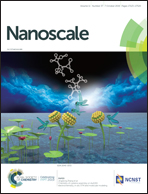Intermetallic Pd3Pb ultrathin nanoplate-constructed flowers with low-coordinated edge sites boost oxygen reduction performance†
Abstract
Although tremendous efforts have been devoted to exploring non-Pt based electrocatalysts toward the oxygen reduction reaction (ORR), achievements in both catalytic activity and durability are still far from satisfactory. Here, we report a facile approach for the synthesis of intermetallic Pd3Pb ultrathin nanoplate-constructed flowers. Such highly opened hierarchical nanostructures with an ordered phase and low-coordinated edge sites exhibited a substantially enhanced activity toward the ORR. Especially, the intermetallic Pd3Pb nanoflowers achieved a record-breaking mass activity (1.14 mA μgPd−1) in an alkaline solution at 0.9 V vs. a reversible hydrogen electrode among the reported Pd-based ORR electrocatalysts to date, which was 1.8, 3.9 and 11.4 times higher than those of intermetallic Pd3Pb nanocubes, Pd3Pb dendrites and commercial Pt/C, respectively. More importantly, the intermetallic Pd3Pb nanoflowers also showed a higher durability with only 23.7% loss in mass activity after 10 000 cycles compared to the commercial Pt/C (35% loss in mass activity) due to their chemically stable intermetallic structures.



 Please wait while we load your content...
Please wait while we load your content...